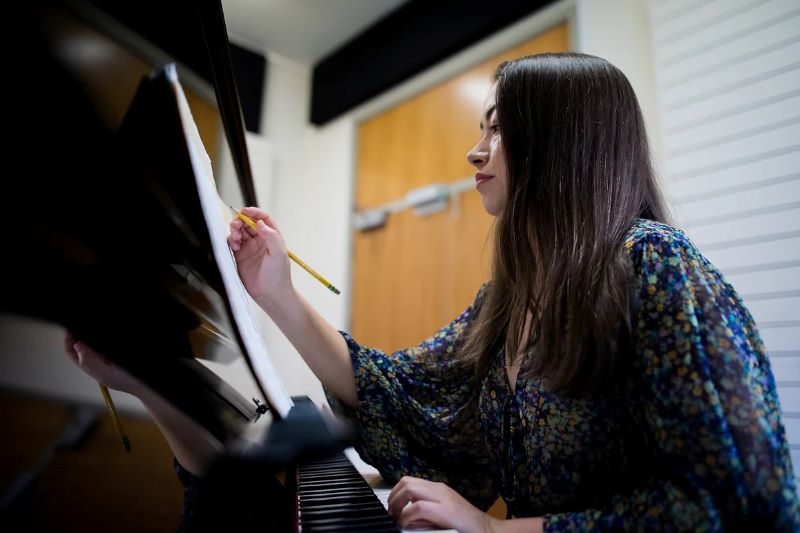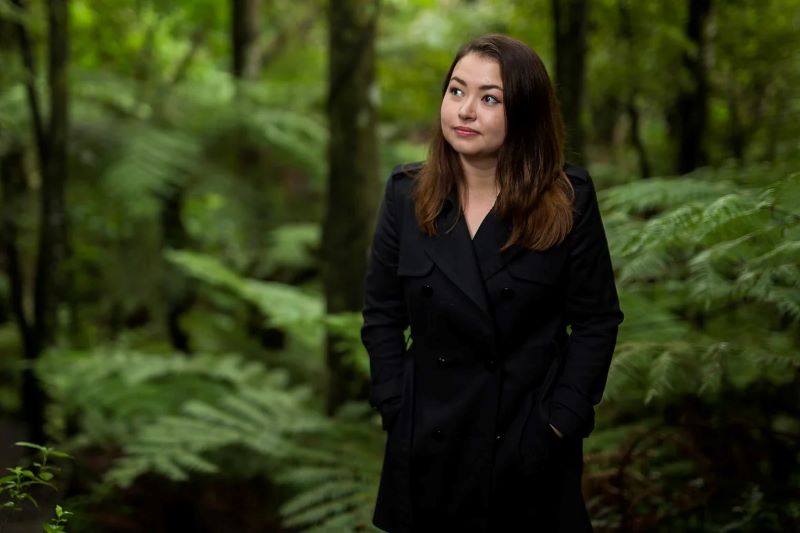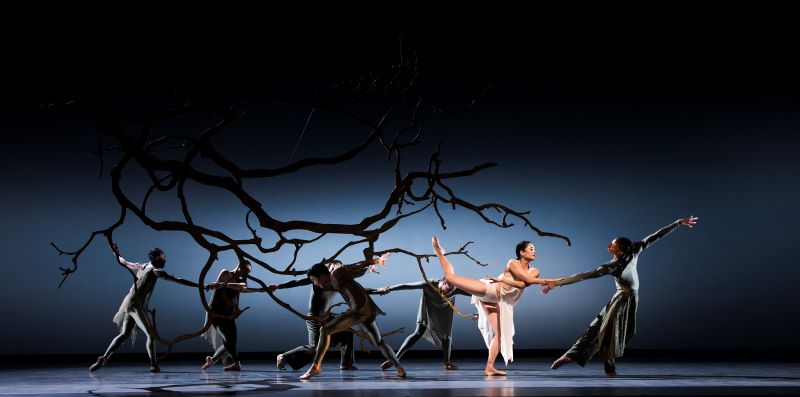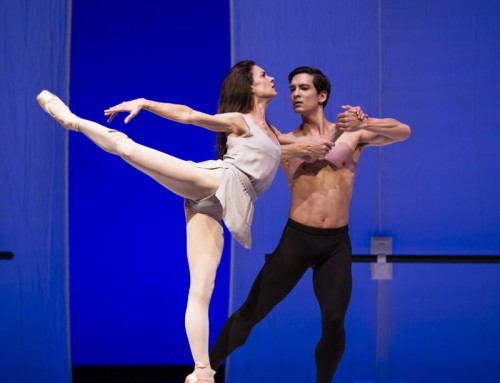Interview with Salina Fisher, Composer for Black Wave
The premiere of Jessica Lang’s Black Wave was an exciting celebration of many “firsts.” Black Wave is the first work of Jessica Lang’s Choreographic Residency at PNB. Black Wave is also the first work in PNB’s repertory with music composed by award-winning artist Salina Fisher. In fact, this is Fisher’s first experience collaborating with a choreographer! Learn more about Salina Fisher and her work in the interview below.
You are the youngest-ever recipient of the SOUNZ Contemporary Award. How did you first become interested in composing?
I started learning piano and violin as a young child, and always loved making up my own music. I had amazing teachers who encouraged me creatively, especially my dear piano teacher Yiyi Ku, who taught me how to notate my ideas when I was only 7. I became very excited and interested in learning music theory, especially about how all the different instruments work and how to write for them. I then had the rare opportunity to perform my first-ever composition with the Nederlands Blazers Ensemble who visited New Zealand around that time. I’ll always be grateful for that experience – the thrill of hearing my musical ideas come to life was immense, and I’ve been hooked ever since!

What inspires you?
I stay open to all kinds of inspiration in my music, and lean towards ideas that resonate with me on multiple levels – emotionally, aesthetically, conceptually, culturally. I’m often particularly drawn to musical exploration of the natural world, including the movement of water and light, and through collaborations with taonga pūoro (Māori musical instruments). My music reflects my mixed Japanese heritage in various ways, and is rooted in my experience as a performer (violin, piano, koto). I’m also deeply inspired by collaboration with other artists, whether that’s within music, across different cultures or genres, or across different art forms, e.g. film, poetry, and ceramics. I couldn’t be more excited about this collaboration with ballet!

You’re a frequent collaborator, but this is the first time your work will be performed by a ballet company. What’s been unique about this experience?
This whole experience still feels like a dream! I’d always hoped that my music would one day be interpreted by dancers, and it’s absolutely overwhelming to have experienced it for the first time at the highest possible level, including with wonderful live musicians. It is absolutely the highlight of my life so far.
In Japanese, there is a word/concept “en” that refers to fate, particularly in terms of relationships between people. There have been so many signs already that Jessica Lang and I were meant to meet, or have “en”, beginning with the fact that she discovered my music (specifically my piece Kintsugi) on the radio during a short drive, just as she was planning her next ballet on this theme. Coincidentally, this happened just weeks before the Seattle Symphony was about to perform my piece Rainphase, which also forms part of the score for Black Wave.
It’s very special to have my music listened to and felt so deeply, by someone who has the vision and ability to bring it to life through such original and expressive choreography, and to lead a team of incredible designers (stage, costume, lighting). Seeing my music come to life in this way has been absolutely mind-blowing, and all of these visual elements reflect my music so sensitively and expressively. It is a huge privilege to have stepped into the world of ballet through Black Wave, and I very much hope it’s just the beginning.

What does the art form Kintsugi mean to you?
Kintsugi is such a striking visual representation of a metaphor that we can all relate to in our own way – the idea of celebrating ‘cracks’ or flaws as beautiful parts of ourselves, and finding ways to heal. This concept felt particularly relevant in 2020 when I wrote my piano trio Kintsugi. It’s a very personal and expressive piece that seems to have resonated with listeners in a meaningful way, and continues to connect me with people I have “en” with.
While the focus of the piece is on the metaphor, during its creation, I happened to meet a Japanese ceramics practitioner and researcher based in Wellington (where I live), Kumiko Jacolin, whose work involves kintsugi. She explained how ceramics is the one art form that incorporates the four natural elements: earth, water, air, and fire. I thought about how humans, like ceramics, are incredibly strong yet also very fragile. In the piece, I explore these ideas of fragmentation, fragility, and strength, through the voices of instruments I feel very close to (piano, violin, cello).
What do you like to do to relax?
I love going for walks, especially by the ocean. Also cooking, listening to music, and spending time with people I love.





